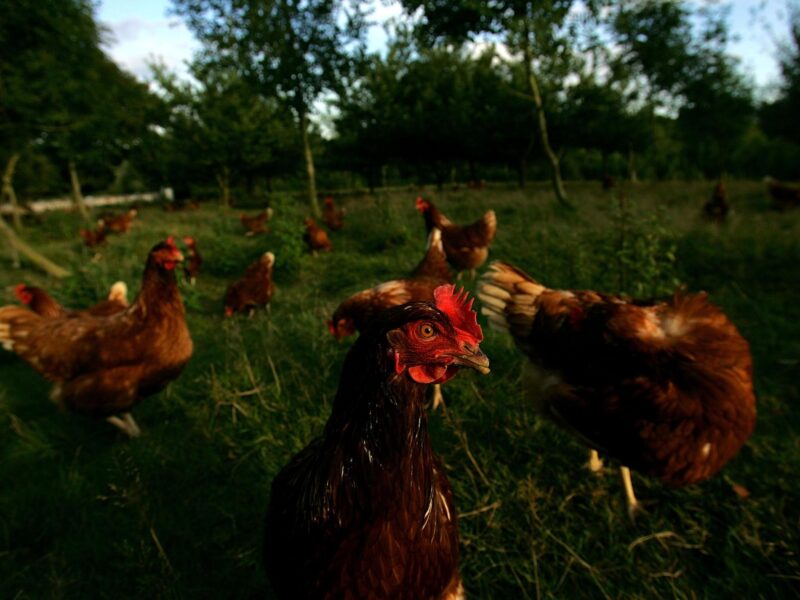
First ever sale of cultured meat heralds protein’s new era

The world’s first sale of cultured meat; chicken pieces served in a restaurant in Singapore | Credit: Eat Just.inc
Slaughter-free Meat Makes Market Debut
Food lies at the heart of many a celebration, but one particular meal recently stood out as historic: the world’s first commercial sale of cultured meat. Just weeks after the nation’s regulatory authority gave cultured meat the go-ahead, Singapore’s 1880 club served the first cultured chicken to paying guests.
The event heralded a new dawn for protein, and it was an evening to die for. Only, no animals died.

A diner taking photos of the historic meal | Credit: Eat Just.inc
Groups of diners in evening dresses and smartest casuals, including government officials, investors and four environmentally aware children and their teacher, perused the menu based around ‘Good Meat cultured chicken’. Sliced, breaded chicken pieces were served in bamboo bowls and on granite plates. Three offerings symbolically covered styles from the US, China and Brazil, the three biggest chicken-producing countries of the world. Tables were forested with tall-stemmed glasses. Restaurant walls were alive with moving images of colourful birds’ feathers, city lights and shoaling fish. Lots of obligatory I-phone pictures were taken. Many smiles exchanged. Clean plates meant cultured meat was roundly polished off.
Then came the moment restaurant-goers normally dread: paying the bill. Only, this time, it would form a priceless memento.
At 7.23pm Singapore time on Saturday 19th December 2020, that very first restaurant bill for cultured meat was settled: each diner paying 23 Singapore Dollars. History was made.

A diner enjoying her cultured meat meal | Credit: Eat Just.inc
Reaction
But after all that, what did it taste like?
A 12-year-old diner gave his opinion: “This chicken…, it’s just chicken, but it’s the most amazing thing I’ve ever seen or ever tasted. It’s definitely made me see how small things, like just changing the way we eat, can literally change our entire lives”.
His 11-year-old companion chimed in: “I’m speechless… It feels good to have chicken without feeling guilty”.
Shortly after the event, I caught up with Josh Tetrick, CEO and co-founder of San Francisco-based Eat Just, the company behind the culinary breakthrough. I was keen to know how it was all received.
“The response has been overwhelmingly positive,” Tetrick told me. “We fed over 40 people who bought and had chicken that didn’t require killing an animal, didn’t require tearing down a forest, didn’t require a drop of antibiotics.”
Having had more than his fair share of false starts and disappointments thanks to regulatory obstacles, Tetrick was understandably elated at getting this milestone over the line.
Yet, he keenly reiterated how this was just the beginning.
“What happened over the last handful of days [in Singapore] is an open door to do the real work now. It’s an open door to scale this thing up. It’s an open door to communicate to consumers. It’s an open door to help more animals,” Tetrick said.
The significance of taking cultured meat from remarkable meal to remarkably mainstream couldn’t be greater. The world now rears and slaughters 80 billion farmed animals every year for food. An estimated two-thirds of them enduring lives of misery on factory farms.
From Lab to Reality
That chicken supper in Singapore showed how human ingenuity offers the possibility to switch mass-meat production from factory farm to bioreactor. And in so doing, provide a decent environment to sustain future generations. Cultured meat uses a fraction of the land and emits far fewer greenhouse gases. A benchmark study has shown cultured meat to be 98 per cent lower in land use and 80-95 per cent lower in greenhouse gas emissions compared to conventionally produced meat products.
Cultured meat is grown using cells harvested from a living animal using a harmless biopsy. They are then placed in a nutrient-rich soup in a process similar to beer or yoghurt. No GMO required.

A diner shows her historic dinner receipt | Credit: Eat Just.inc
Historic
As the first course of cultured meat was served, the walls must have shaken on factory farms everywhere. Meat no longer relied on the inefficient rearing and killing of living animals for meat.
It came less than three years after George Monbiot and I stood in front of a baying crowd of intensive farmers at the Oxford Union Debate to declare that by 2100, meat-eating as we know it would be a thing of the past.
Our prediction was based on confidence that Tetrick and his ilk would make cultured meat a reality.
With the world’s first commercial sale of cultured meat, change is moving apace. Protein has finally come into the twenty-first century. Whilst many a meal marks a special occasion, few actually get to make history. Whether cattleman, conscious carnivore or contented consumer, this development promises to profoundly affect your future. That meal marked the moment when meat evolved from predominantly produced on the factory farm to cruelty-free, planet-friendly food from the bioreactor.
From here on in, meat-eating as we know it looks set to undergo a rapid transformation.
I for one see that as something to celebrate.






